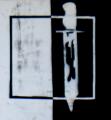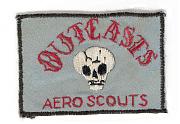“This concept envisages a battalion with the following, assets (radios and individual weapons not listed):
• Personnel: 44 officers (1 lieutenant colonel; 2 majors; 10 captains; 1 captain, Medical Corps; 30 lieutenants) ; 2 warrant officers, 173 non-commissioned officers, 667 enlisted men equalling 886 aggregate.
• Heavy Weapons: four 81mm mortars, eight 60mm mortars, six 75mm or 106mm recoilless rifles on 1/4-ton, sixteen 90mm recoilless rifles, forty M60 machineguns including eight on 1/4 -ton or tripod.
• Vehicles: forty-three 4 -ton including 14 with machinegun or recoilless rifle, twenty-three 1 1/4 or Gama Goat, fourteen 2 1/2-ton, ten 5-ton, five field ambulances, one 5-ton wrecker for a total of 96 wheeled vehicles
plus eight 1 1/2-ton and five water trailers.
Compared to the present battalion, commando square is about the same size, but strong in officers, strong in
riflemen (64 X 6 = 384 versus 27 X 11 = 297), machineguns and other direct- fire platoon weapons and wheeled vehicles. It is weak in mortars and heavy antitank weapons. This is the price of foot mobility. Within limits,
the mortar firepower is less a function of the number of tubes carried than of the amount of ammunition carried. A column of men on foot can carry only a certain overall weight and still move out. Structurally, in addition to its primary missions, the battalion is able to provide LRRPs and other six man teams for saturation patrols, support of civil authority, house searches, and so forth. It also has a number of machinegun vehicles for duty as street and road patrols, convoy escorts, and so on.
Other possible variations include:
• In a conventional, mid-intensity operation with limited off-road requirements such as Korea or Alaska,
substitute 81mm for 60mm mortars, 4.2-inch for 81mm mortars, and add one or two additional soldiers to each mortar squad.
• The battalion-level anti-tank weapon is the 75mm or 106mm recoilless rifle. The choice is a function of
the terrain and the tank threat and, possibly, of the availability of 75mm weapons and ammunition in the inventory. In a situation with an imminent tank threat, such as in Europe, Korea or the Middle East, the battalion would have to be reinforced with a TOW platoon and/or a platoon or more of tanks or M551 Sheridans in a tank-destroyer role.
• Conversely, for extended backcountry off-road operations where there was a minimum tank threat and
not much requirement for destroying fortifications, the 90mm recoilless rifles could be left behind and their crews used to provide additional eyes, ears and rifles, and to carry more ammunition for the machineguns.
• There is a mechanized version of commando square, but elaboration of this is outside the scope of this article. Otherwise, the concept applies to airborne, airmobile and armour battalions. Finally, the commando square organization lends itself to formation of mixed Active Army, Reserve component battalions. In such a unit, the Active Army element would be able to operate alone as a thin triangular battalion of 457 men, a light but viable combat organization(p. 54)”.











 ). Given that links to articles often do not work I’ll liberally sprinkle some excerpts below rather than attempt to summarise his arguments in my own quaint prose;
). Given that links to articles often do not work I’ll liberally sprinkle some excerpts below rather than attempt to summarise his arguments in my own quaint prose;






Bookmarks